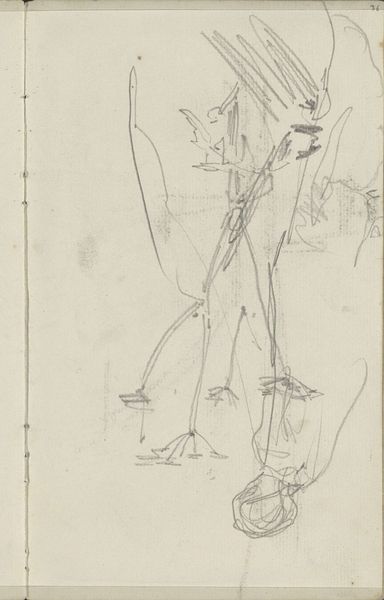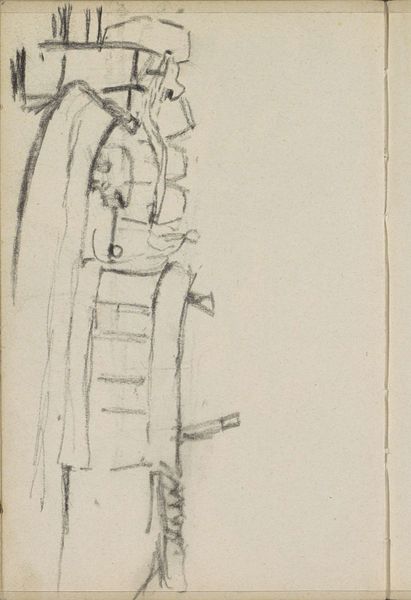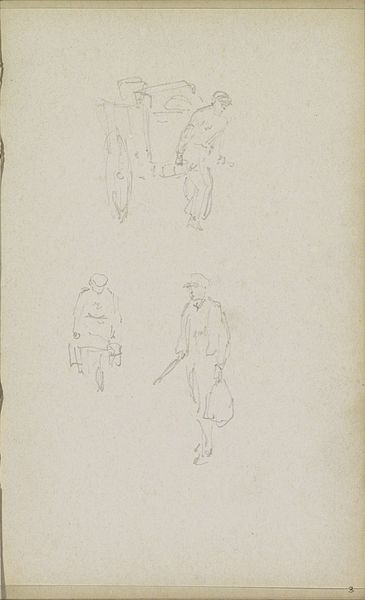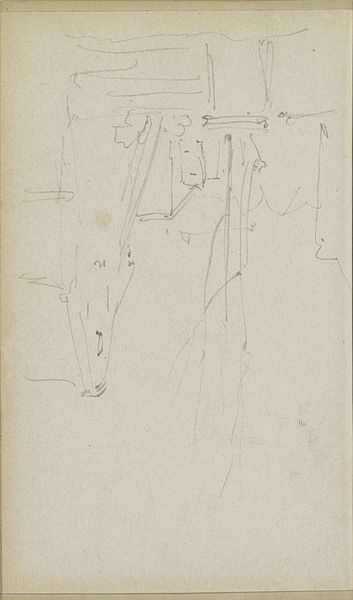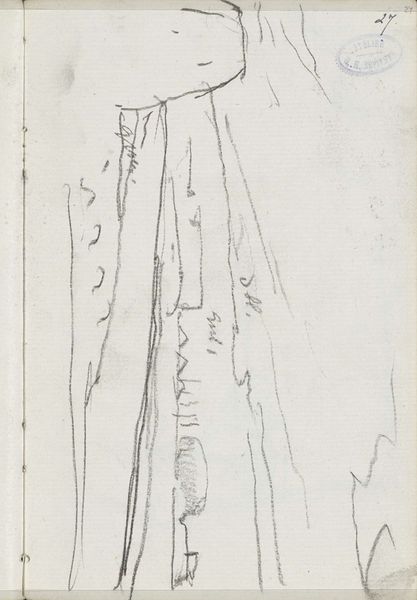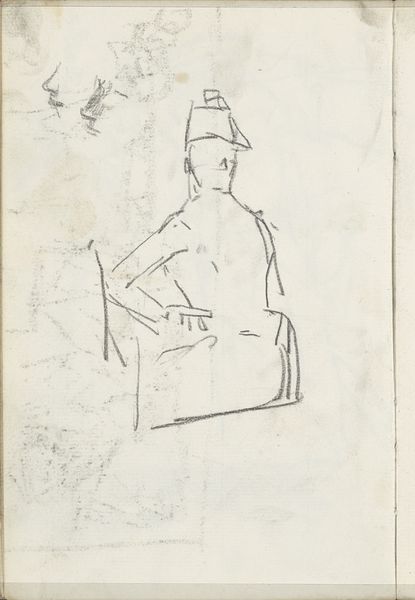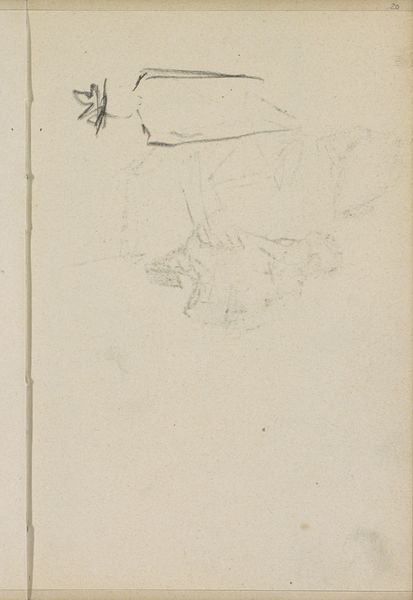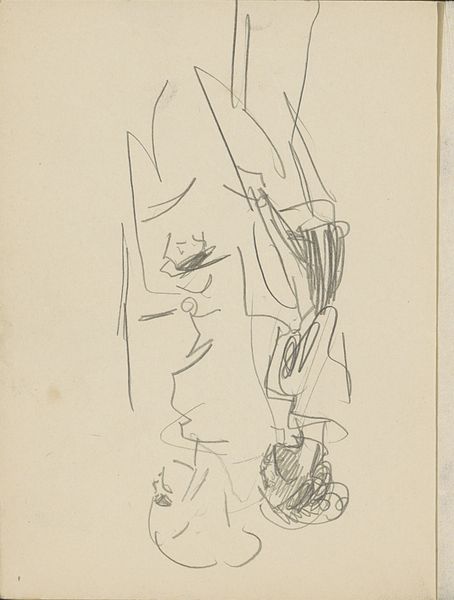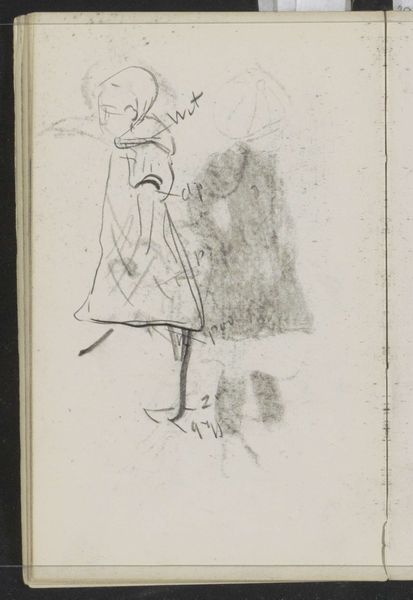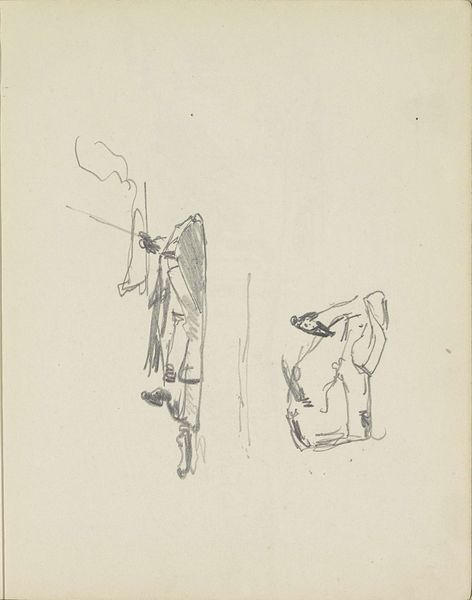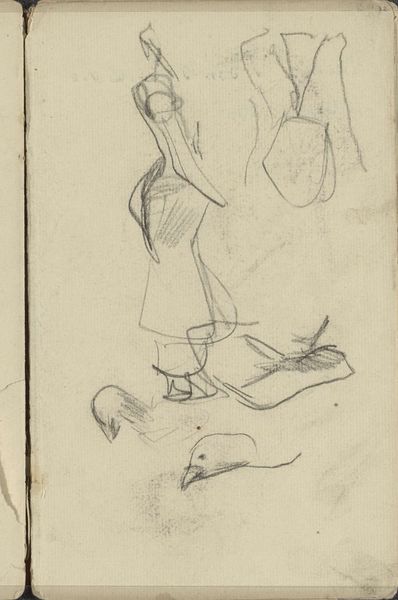
drawing, pencil
#
portrait
#
drawing
#
quirky sketch
#
impressionism
#
figuration
#
personal sketchbook
#
idea generation sketch
#
sketchwork
#
ink drawing experimentation
#
pen-ink sketch
#
pencil
#
line
#
sketchbook drawing
#
genre-painting
#
storyboard and sketchbook work
#
sketchbook art
#
initial sketch
Copyright: Rijks Museum: Open Domain
Curator: Here we have George Hendrik Breitner's "Two Studies of a Standing Woman," a drawing from around 1882 housed at the Rijksmuseum. Editor: My immediate impression is of something fleeting, like a snapshot caught in charcoal—a study of movement and form reduced to its barest essence. Curator: Indeed, the loose lines, the sketchy quality—they reveal Breitner's process, his way of rapidly capturing impressions of everyday life. Note the material conditions here: inexpensive paper, a readily available pencil or pen. This speaks to the democratized production of art. He isn't meticulously crafting a formal portrait for the elite; rather, he's exploring the form of a woman likely working-class or middle-class. The means of production suggests a shift towards art reflecting the common person and experience. Editor: I'm drawn to the figure on the left. The hat creates a strong, geometric shape against the softer curves of her coat, a visual anchor within the composition. And on the other, notice the line implying the contour of the arms and the hands resting at her side, but only as much line as absolutely needed. He's getting to the essence. Curator: Exactly. And if we look at the social context of the time, this piece emerges during a period of burgeoning industrialization. Breitner was known for depicting the working classes and urban scenes—reflecting his concern for their welfare and his keen interest in depicting Dutch life at that period in time. His process echoes the speed and transience of the rapidly changing world around him. Editor: There is, however, also something timeless here, and deeply structural. Observe how the repetition of vertical lines in their clothing and stance creates a subtle rhythm that leads your eye up and down the composition. The contrast between the darker, more defined strokes and the faded ones also highlights elements such as the woman's fashionable hat. This shows more than a rapid attempt to represent women, there are decisions, it has a rhythm that structures the whole artwork. Curator: Ultimately, this piece grants us access to Breitner's working methods and thought processes. His artistic labor becomes evident, highlighting a departure from the traditional, polished artwork aimed at a high society and revealing how art may address the mundane concerns of everyday life. Editor: Well said. Breitner captures not just what they looked like, but an attitude toward form. Through a keen consideration of shape and placement he provides the essence of presence on the paper.
Comments
No comments
Be the first to comment and join the conversation on the ultimate creative platform.

